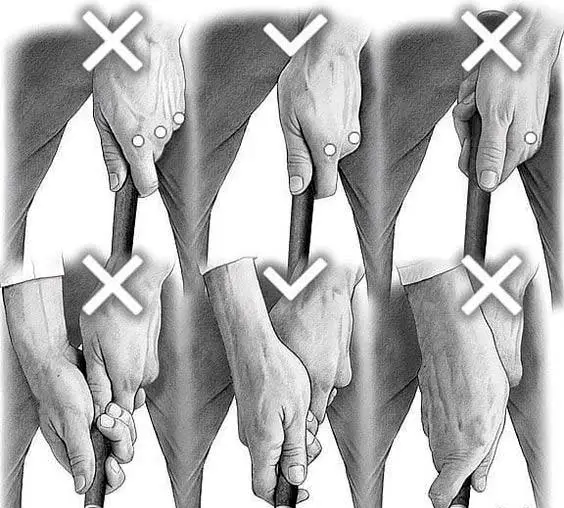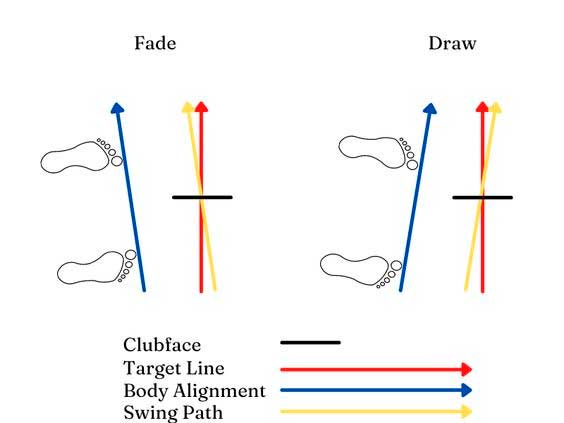Are you ready to embark on a trip into the world of golf? Whether you're a total novice or someone looking to refine their skills, this guide is your gateway to becoming a better golfer.
Welcome to "Beginner Golf Tips - Golf Lessons for Beginners," where we will explain the fundamental techniques and strategies that can turn you into a confident golfer.
Fundamentals

Before you step onto the golf course, let's address a universal struggle that most golfers face: inconsistency.
You see, every golfer, be it a seasoned pro or an eager newbie, has experienced that magical moment when the ball connects perfectly with the clubface and soars straight and true.
It's a feeling like no other. Nevertheless, what often follows is a series of shots that don't quite measure up.
What's the culprit behind this inconsistency? It's usually poor technique, an inefficient golf swing that defies replication. The good news is, as a beginner, you have a remarkable chance.
You haven't spent years ingraining bad habits, so building a solid, faithful golf swing around proven fundamentals is well within your reach.
So here's the game plan
Step 1: Master a great setup position

Golf differs from many sports in that the ball doesn't move. You have the luxury of preparing yourself meticulously for each shot. This is where the significance of a decent setup position cannot be overstated.
It may seem mundane, but it's the basis upon which your golf game rests. Make it a routine to check your setup regularly – every practice session isn't a destructive idea. Commit to this, and you'll avoid adopting bad habits.
Step 2: Ingrain the checkpoints of a great swing
Okay, so once you've nailed your setup position, it's time to craft a great golf swing. While there's no one-size-fits-all perfect swing, there are fundamental elements and key positions that can make your swing efficient, controllable, and consistent.
You'll find these elements broken down into stages and checkpoints in the lessons and tips we offer. Practice these diligently, using a mirror to check your form if possible. Don't worry about ball flight initially; focus on mastering the mechanics.
Step 3: Develop a nice short game

Actually, let's talk about a golfing truth that experienced players know all too well – "golf is all about the short game."
While beginners often fixate on drives and iron play, it's your short game, encompassing pitching, chipping, and putting, that truly gets the ball close to the hole.
As a beginner, aim to hone your short game as soon as you feel reasonably confident with your full swing.
Step 4: Practice With Purpose
Practice makes perfect, but it's the quality of practice that truly matters. Instead of mindlessly pounding ball after ball on the range, practice with a purpose.
You'll find that focused, deliberate practice yields far better results. Take a cue from those who've been there before – it's not about the quantity of practice; it's about the quality.
Step 5: Understanding ball flight
Beginners often struggle with getting the ball in the air consistently. The key here is understanding that to lift the ball, you must strike the ground effectively.
This means keeping good posture, bending from the hips, and extending both arms into the ground during your swing. Don't be afraid to make practice swings where you intentionally contact the ground. It's a crucial step to launching those beautiful shots.
Step 6: Knowing your clubs

Even as a newbie, it's necessary to know how far each of your clubs can carry the ball. Keep a record of your distances and be mindful that they might change as you progress.
This knowledge will strongly enhance your on-course decision-making and overall consistency.
Step 7: The reliable fairway club
Once your tee shot lands safely in the fairway, you'll want a reliable club to continue your journey toward the hole. As a beginner, find a club that you feel comfortable with, one that helps build your confidence and ensures you have fun. A lofted fairway wood, like a 7-wood, is often a great choice.
Step 8: Mastering the basic chip
You also need to have a basic chipping strategy in your arsenal. This shot doesn't need to be perfect; it should serve as a go-to option when you're close to the green.
Focus on holding the club lower on the grip, maintaining a narrow stance, shifting your weight towards the target, and making a basic putting motion that brushes the grass. A pitching wedge is an excellent choice for this shot.
Step 9: The right golf equipment

Last but not least, make sure you're well-equipped. Carry an ample supply of golf balls, a golf glove if you desire one, tees, and a ball marker in your bag. Being prepared ensures a smooth round and keeps the game enjoyable.
Step 10: Distance control in putting
It's not a secret that putting is an art, and learning to control distance is key. Maintain good posture, ensure your eyes are directly over the ball, and let your backstroke length dictate the distance.
Smaller strokes equal slower putter swings, while larger strokes increase the swing's speed. Your feet can be used as a guide for stroke size.
To sum up
In conclusion, by mastering the fundamentals, refining your technique, and embracing the wisdom shared here, you're well on your way to becoming a confident and skilled golfer.
So hit the course with enthusiasm, practice with purpose, and watch your game flourish. May your drives be long, your chips be precise, and your putts find the cup. Happy golfing!

Enrique Martínez Luque
Enrique Martínez Luque is the Argentina-based golf expert and professional writer. He built his career in the world of golf taking a number of positions. Enrique was the manager of a golf club, director at a federation level, an agent for professional golfers and director institutional relations on the Argentinian Tour. Assissted the professional golfers on major tours for almost 20 years. Worked as the press officer of national and international golf tournaments.
Follow me


